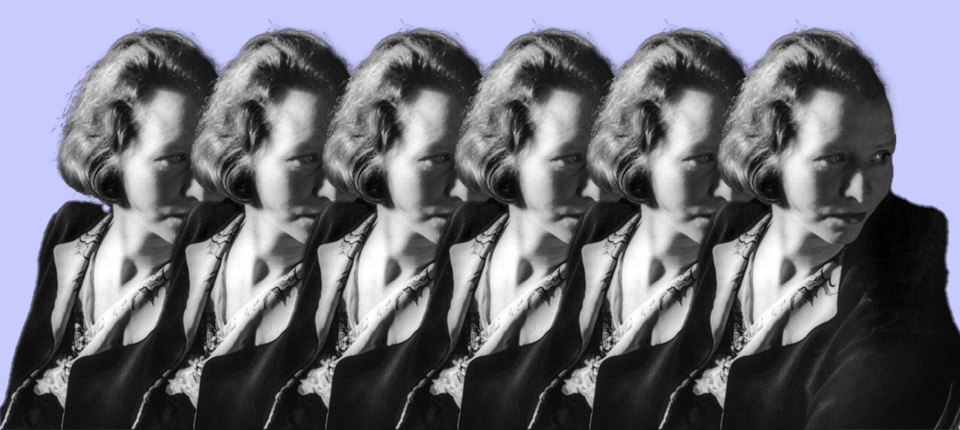Women and men sleep differently, so their sleep disorders shouldn’t be treated the same way, suggests new research that explores the biological sex characteristics of getting shut-eye.
Men are more likely to have obstructive sleep apnea, while women are more likely to experience insomnia and report lower sleep quality. These are among the findings of a literature review published in April in the journal Sleep Medicine Reviews. The researchers hailed from Harvard University, Stanford University, and the University of Southampton in the U.K.
This research is as much about precision medicine as it is sleep disparities between the sexes, says coauthor Renske Lok, PhD, a postdoctoral fellow at the Stanford Center for Sleep and Circadian Sciences.
“We’re trying to move away from the one size fits all,” she tells Fortune. “[Medicine] needs to be more tailored.”
Understanding how and why biological sex impacts various sleep disorders is a critical step toward individualized treatment. However, the long-standing lack of inclusion of women in biomedical and behavioral research is a hindrance. The National Institutes of Health didn’t require studies to account for sex as a biological variable until 2016.
“The biggest finding is that we absolutely have to do better in including women in our research designs,” Lok says. “Historically, women have not been included as much as men, in part because it was always assumed results from men would translate automatically to women. And we’re starting to find out more and more that this is not the case.”
Sex and circadian rhythm
The mental, physical, and behavioral changes your body experiences in a 24-hour period are called circadian rhythms. Almost all your organs and tissues have their own rhythms, and together they form a kind of master biological clock that’s particularly sensitive to light and dark.
At night, your brain produces more of the sleep hormone melatonin, which makes you feel tired. In one study reviewed by Lok and her colleagues, women secreted melatonin earlier in the evening than men. This aligns with other research showing men typically are later chronotypes; that is, they go to bed and wake up later than women. As such, men tend to have worse social jetlag, when their biological clock doesn’t align with the traditional timing of societal demands, like working a 9-5 job.
Another study showed that core body temperature—which is highest before sleep and lowest a few hours before waking—also peaked earlier in women. Other research found that women’s circadian periods were about six minutes shorter than men’s: 24.09 hours compared to 24.19.
“While this difference may be small, it is significant. The misalignment between the central body clock and the sleep/wake cycle is approximately five times larger in women than in men,” Lok said in a news release about her team’s work. “Imagine if someone’s watch was consistently running six minutes faster or slower. Over the course of days, weeks, and months, this difference can lead to a noticeable misalignment between the internal clock and external cues, such as light and darkness.
“Disruptions in circadian rhythms have been linked to various health problems, including sleep disorders, mood disorders, and impaired cognitive function. Even minor differences in circadian periods can have significant implications for overall health and well-being.”
Cognitive behavioral therapy is one option for getting your circadian rhythm on track—especially if your biological and social clocks don’t match up—says Alaina Tiani, PhD, a clinical psychologist at the Cleveland Clinic Sleep Disorders Center.
“It differs patient to patient, but we have them take melatonin (supplements) earlier in the evening and then we have them use some bright-light exposure in the morning,” Tiani tells Fortune, referring to night owls who need to wake earlier. “Those two things help anchor their sleep window as they’re working on shifting things.”
rdegrie—Getty Images
Work-life stress may influence women’s insomnia
You’ve likely experienced bouts of acute insomnia, stressful periods throughout your life when you’ve had difficulty falling asleep, staying asleep, or getting high-quality sleep. They may have lasted just days or as long as a few weeks. Chronic insomnia, though, is when you experience these sleep disruptions at least three times a week for more than three months, according to the National Heart, Lung, and Blood Institute. In addition, chronic insomnia can’t be explained by other health problems you may have.
Insomnia is about 1.5 times more common in women, previous research has shown. Lok and her colleagues theorized this may be due to certain risk factors more prevalent in women, such as anxiety and depression.
Dr. Eric Sklar is a neurologist and medical director of the Inova Sleep Disorders Program in northern Virginia. Insomnia is one of the most common sleep disorders he treats, and he was unsurprised by the review’s findings.
“There is a high correlation with underlying psychiatric disorders and insomnia,” Sklar tells Fortune. “Some of the underlying societal stressors for men and women may be different.”
Women still are often pigeonholed into the role of family caregiver, while also clawing their way up the career ladder, Sklar notes, not to mention fielding life’s other stressors. In addition, evening downtime is essential for healthy circadian rhythms and women sometimes have to fight harder for it, he says. And when so-called “revenge bedtime procrastination” involves screen time, women may be further disrupting their body clocks.
By some objective measures, women sleep better than men, the review shows. Women have higher sleep efficiency, which refers to the percentage of time in bed actually spent sleeping. Women entered the dream-heavy rapid eye movement (REM) phase of sleep earlier, and spent about eight minutes longer in non-REM sleep. However, women self-reported poorer sleep quality than men.
While new parents face a variety of sleep disruptions, Tiani tells Fortune a swath of her postpartum patients and women with young children report diminished sleep quality.
“Almost like their brain was half-listening out for their children in the middle of the night, in case they needed something,” Tiani says. Patients who are caregivers in other capacities have reported the same thing, “that listening out in the night.”
Why do men and women sleep differently?
Women did catch a break with one common sleep disorder: obstructive sleep apnea, when the upper airway becomes blocked repeatedly during sleep. The disorder is almost three times as common in men, however, it’s only associated with an increased risk of heart failure in women, the review noted.
“It is well known that men are at a higher risk,” Sklar tells Fortune, adding that biological sex is used in sleep apnea risk assessment. “Men tend to have larger necks, and neck size is also a risk factor.”
Lok’s review also noted these sleep differences between the sexes, among others:
One key factor remained inconsistent across the nearly 150 studies Lok and her colleagues analyzed: women’s menstrual phases. Menstruation correlates to numerous changes that impact sleep, such as elevated body temperature during the luteal phase of the cycle. What’s more, some research failed to consider subjects’ oral contraception usage, which may have skewed results.
“It’s tricky because, for example, if somebody doesn’t use hormonal contraceptives, it means that you have to include women at the same menstrual phase,” Lok tells Fortune. “Otherwise, you get all kinds of variation due to changes in hormonal levels.”
Having tackled some of the hurdles standing in her team’s way—namely, thin evidence of some biological sex differences—Lok is hopeful about future research.
In some instances, “we’re not sure if there are any sex differences because, simply, nobody has ever looked at it,” Lok says. “At the same time, it’s a very encouraging article because it definitely identifies where the gaps are still present.”
For more on biological sex and health:
























































